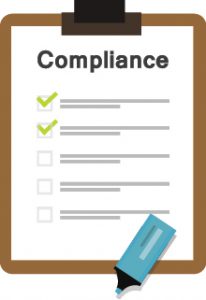UK GOVERNMENT EIGHT WORKPLACE GUIDES
 The UK Government’s eight COVID-secure guides cover a range of different types of workplace and are divided accordingly:
The UK Government’s eight COVID-secure guides cover a range of different types of workplace and are divided accordingly:
- Construction and other outdoor work
- Factories, plants and warehouses
- Homes
- Labs and research facilities
- Offices and contact centres
- Restaurants offering takeaway and delivery
- Shops and branches
- Vehicles
Given this approach (rather than sector-specific guidance), the UK Government has acknowledged that individual businesses may operate more than one type of workplace, such as an office and a factory. As such, employers may need to use more than one of the guides to develop their COVID-secure control measures.
These guides are not regulations, nor are they Approved Codes of Practice and are therefore not directly enforceable, but they should be considered to be the basis upon which any inspector will assess preparations and measures.
SECTOR SPECIFIC GUIDANCE
In addition to the guidance published by the UK Government there is also a large amount of sector specific guidance and advice being developed. Employers are also encouraged to refer to any relevant trade bodies for further advice.
COVID-SECURE MEASURES
Employers will need to devise and implement COVID-secure control measures that are appropriate for their individual workplace. However, the following are some
common issues which may need to be considered:
- Maintain home-working protocols as far as possible
- Ensure that the building is safe for reoccupation – see Barbour technical guide on “Preparing to Reopen Work Premises after COVID-19”
- Implement physical social distancing measures together with increased hygiene and support these with plenty of signage
- Clearly communicate measures to staff and other interested parties
- Provide further training if required
- Develop emergency procedures for situations where people may fall ill with COVID-19 in the workplace
- Ensure changed staffing levels/patterns are reviewed in light of considerations such as fire wardens, first aiders and other emergency roles
- Establish a policy with regards to contractor attendance and management on site
- Minimise travel – where travel is necessary avoid public transport as far as possible
- Establish a policy with regards to assurances from sites prior to employee visits to other workplaces
- Remember the down-stream impacts of such changes (particular isolation/shielding) on staff – enhanced mental wellbeing measures and review of risk assessment considering stress factors may be required
PROTECTING PEOPLE WHO ARE AT HIGHER RISK
In addition to the issues outlined above, employers must give special consideration to the following vulnerable groups:
- Clinically extremely vulnerable individuals have been strongly advised not to work outside the home
- Clinically vulnerable individuals, who are at higher risk of severe illness (for example, people with some pre-existing conditions), have been asked to take extra care in observing social distancing and should be helped to work from home, either in their current role or in an alternative role
- People who live with clinically extremely vulnerable individuals.
If clinically vulnerable (but not extremely clinically vulnerable) individuals cannot work from home, employers need to think about the safest available
on-site roles, that enable them to stay two metres away from others.
KEY ACTIONS
The workplace guides set out a number of general requirements that employers are expected to follow, including:
- Conducting a specific risk assessment with regards to the hazards associated with COVID-19
- Reducing risks as far as reasonably practicable
- Identifying and protect those at highest risk
- Implementing social distancing measures (based on a two metre separation)
- Enabling more regular hand washing/ sanitisation
- Minimising visitors to site
- Enhanced cleaning regimes
- Altering work/shift patterns to reduce congregation and crowding
- Avoiding the addition of COVID-19 specific PPE so far as possible (although face coverings may be appropriate in certain settings)
- Communicating any new measures arising from the risk assessment to the relevant people
- Displaying a ‘COVID-Secure’ poster in the workplace
 A separate Barbour Technical Guide – “Preparing to Reopen Work Premises after COVID-19” – outlines other health and safety issues that need to be considered, before reoccupation, as a result of the premises being empty for several weeks or months. https://www.barbour-ehs.com
A separate Barbour Technical Guide – “Preparing to Reopen Work Premises after COVID-19” – outlines other health and safety issues that need to be considered, before reoccupation, as a result of the premises being empty for several weeks or months. https://www.barbour-ehs.com




